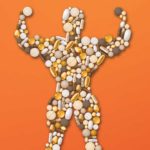Our Basic Bug Instinct
Modern diseases such as asthma, diabetes and Alzheimer’s are linked to changes in the hundred trillion odd microbes residing in our bodies. Excessive hygiene, antibiotics and our diets are to blame for these changes
 Priyanka Pulla
Priyanka Pulla
 Priyanka Pulla
|
27 Dec, 2013
Priyanka Pulla
|
27 Dec, 2013
/wp-content/uploads/2015/11/bug-instinct2.jpg)
Modern diseases such as asthma, diabetes and Alzheimer’s are linked to changes in the hundred trillion odd microbes residing in our bodies.
Most of us know about last century’s green revolution, when countries around the world multiplied their agricultural production manifold. But the first recorded green revolution occurred about 10,000 years ago. Human beings, who were hunter-gatherers till then, began farming. They domesticated the first wild plants and animals and settled down in small villages, instead of wandering to wherever their search for sustenance led them. As a result, for the first time in human history, food was abundant.
But all this came at a price. Because humans began living in such proximity of one another and of farm animals, new infectious diseases afflicted them. Small pox, plague and measles crossed over to humans from domesticated animals and parasites like rats, and then swept unstoppable across populations. In response, human beings eventually developed antibiotics. We also realised that simple sanitation could keep several infections at bay.
This suppression of infectious diseases through antibiotics triggered a curious see-saw effect. As plague and typhoid disappeared, a new set of diseases took hold of us: auto-immune disorders such as asthma, irritable bowel syndrome and Type 1 diabetes, as well as heart disease and dental cavities. Even as we relegated one set of dreaded diseases to history, we ushered in other equally dreaded ones. Why did this tradeoff happen?
Research is now revealing that these modern diseases are all linked to the changing demographics of an invisible, hundred-trillion-strong population of microbes in our bodies, whose existence we didn’t know of till recently. These microbes are collectively called the human microbiome, and they pervade our bodies—from the oral and nasal cavities, to the ears, the vagina, the stomach, the intestines and the skin. They outnumber our own cells ten to one, which makes us more microbe than human. It’s hard to tell where our bodies end and these microbes begin, because they lend a hand in several critical bodily functions: digesting food, absorbing and metabolising nutrients, and fighting off disease. Altogether, our microbiome measures a piddly pound or two on the scale, but it more than pulls its weight in function.
It is changes in this microbiome since the dawn of the Neolithic period, when the first green revolution happened, that seems to hold the key to many modern diseases. As a direct result of our growing affluence and our fight against infections using antibiotics, a smaller variety of germs exists in our body today. This means fewer good bacteria, such as lactobacilli, and less resistance to attacks by bad ones.
During the Neolithic revolution, we began eating more grain and carbohydrates, causing a shift in our microbial population towards bacteria that preferred such a diet. Also, several disease-causing pathogens shifted to our bodies because it was so much easier for them to spread in closely-packed human settlements. Next, came the era of antibiotics. While these powerful drugs kill harmful bacteria, they have a carpet-bombing effect, and nuke the good ones as well. Today, research is showing that some beneficial bacteria that die during a course of antibiotics never recover fully.
Meanwhile, our diets have continued losing indigestible fibre steadily, to be replaced by industrially-processed flour and sugar, which now dominate our plates. Alongside, the nature of childbirth and early-life care has changed. Fewer women give birth naturally, and the period of breastfeeding has been cut short from a couple of years to one. This means that newborn infants aren’t receiving beneficial bacteria from their mothers early enough. The deluge of changes, together with never-before standards of hygiene in our daily lives has turned our once robust microbiome, with a diverse species of bacteria, into a fragile oligarchy of a few dominant species.
Enter modern disease.
MISSING IN ACTION
Among the good bacteria that are absconding today is one called Heliobacter pylori (H pylori), made famous by the discovery of its role in gastritis and stomach cancer. In a 2011 article in Nature, medical researcher Martin J Blaser wrote that H pylori was the dominant microbe in all stomachs till the last century. But today,less than 6 per cent of American, Swedish and German children carry the bacteria in their guts. Antibiotics could be the culprit. From the point of view of stomach cancer, which is caused sometimes by H pylori, this is great news.
But H pylori has its uses, which is why it was so pervasive in our bodies in the first place. According to Blaser, people who lack these bacteria tend to develop allergies such as asthma and hay fever. Also, as H pylori has disappeared from our tummies, the rate of gastrointestinal reflux disease (GERD—in which stomach acid sloshes back up the oesophagus, gradually corroding its surface—seems to have gone up. Chronic GERD leads to a condition called Barrett’s oesophagus, where the cells lining the oesophagus grow abnormal. Barrett’s oesophagus is, in turn, a risk factor for esophageal cancer.
Could it be that with the loss of H pylori, we have traded off stomach cancer with that of the gullet?
The other disease in whose favour the scales have tipped is Alzhemier’s. In a study published in September this year, University of Cambridge scientists found that countries with higher levels of sanitation had higher rates of Alzheimer’s. In fact, rate of infectious disease seemed to be negatively correlated with Alzheimer’s: countries with lower rates, such as Switzerland and Iceland, had 12 per cent higher rates of Alzheimer’s compared with countries with high rates of infectious disease, such as China and Ghana.
The Cambridge researchers believe this study supports the Hygiene Hypothesis: reduced exposure to friendly microbes due to cleaner water, antibiotics and even paved roads, could compromise the immune system. When we are exposed to these microbes through contact with soil, faeces and domesticated animals, our immune system develops the appropriate responses. But as these microbes disappear from our environment, we become more vulnerable to faulty immune system responses such as neuroinflammation, which could be a cause of Alzheimer’s.
GUT INSTINCT
One place where the battle between good and bad microbes is at its most intense is the gut. Because many pathogens enter our body via the gut, a large squad ofimmune cells stands guard here. When things go off keel in the intestinal microbiome, it disrupts the immune function of our entire body. Auto-immune diseases, in which the immune system cannot tell our own body cells from external pathogens and ends up destroying the former, is one such disruption.
Both animal and human studies reveal that beneficial bacteria, such as lactobacilli, help the lining of the intestine carry out its protective function better, by preventing pathogens from entering, and keeping auto-immune responses at bay. Second, these bacteria may be helping T regulatory cells, a kind of white blood cell, proliferate. T regulatory cells are important because they keep auto- immunity in check, ensuring our immune system doesn’t go overboard in its fight against disease.
This symbiosis between good bacteria and intestinal health is often altered in diseases such as Type 1 Diabetes, in which our body turns against its insulin-producing pancreatic cells. But how does it get altered? A 2008 study in the journal Diabetologia provided a clue when it found that the risk of Type 1 Diabetes was higher in children delivered via Caesarean sections.
This could be because babies acquire their first set of beneficial microbes, such as bacteroides, bifidobacteria and lactobacilli, during passage through the microbe-rich birth canal. When the short cut of Caesarean birth is taken, babies acquire these useful germs much later. Bacter- oides and lactobacilli are known for their role in preventing harmful bacteria from colonising the intestines.
According to a 2011 paper reviewing research on the role of the intestinal microbiome in Type 1 Diabetes, the same mechanism has also been linked to auto-immune diseases such as Crohn’s disease and irritable bowel disease. Studies have shown that patients with Crohn’s disease have fewer and less diverse bacteria such as firmicutes and bacteroidetes.
PLAQUE JUST ISN’T WHAT IT USED TO BE
Disease-causing microbes are winning the war in our mouths too. In a 2012 study in Nature, a group of Australian scientists studied the bacteria calcified in the dental plaque of skeletons ranging from 7,500 to 1,000 years old. They then compared these bacteria with those in their own mouths. The study revealed that as in our intestines, microbial diversity has shrunk in our mouths as well. The composition of oral bacteria has changed markedly in recent times, possibly during the Industrial Revolution, due to carbohydrate-rich diets containing processed flour and sugar. From a predominance of healthy bacteria earlier, our mouths now harbour more cavity-causing bacteria, such as Streptococcus mutans. This probably explains our chronic tooth and gum problems today, compared to our distant ancestors.
Our hearts, too, can’t escape the influence of our omnipresent microbial housemates. In April this year, a study by Cleveland-based doctor Stanley Hazen threw light on the unexpected role of microbes in the development of arterial plaque among red-meat eaters. Red meat contains a molecule called carnitine, which is suspect for its role in heart disease. Hazen’s study found that carnitine is digested to produce the primary culprit in heart disease, a compound called trymethylamine N oxide or TMAO, which causes the thickening of arteries.
But carnitine cannot be digested without certain gut bacteria. It turns out that the gut bacteria that are needed to digest carnitine are only present in the bodies of people who eat meat regularly. This means that if a vegan consumes red meat, the dangerous conversion of carnitine to TMAO doesn’t happen. This could explain the relatively lower rates of heart disease among vegetarians. It isn’t the red meat at fault, or even the carnitine; it’s the bacteria.
SEARCHING FOR THE IDEAL MICROBIOME
Research so far has thrown up tantalising hints about the possible role of the modern human microbiome in disease, but there is still much that is unknown. To understand the full nature of the microbiome’s contribution, we need to know not only what bugs we harbour in our bodies, but also what their genomes looks like. Altogether, the total number of genes in the human microbiome is 100 times the number in human cells.
In 2008, the National Institutes of Health in the US began an ambitious programme called The Human Microbiome project, in which they are attempting to understand the composition of the microbiome and its genetic makeup. Taking this another step further is the Human Food Project: an attempt to compare the modern microbiome with that of societies of hunter-gatherers, who still live at the pre-Neolithic edge of urbanisation. One part of the Human Food Project is the American Gut Project, which collects samples from the faeces, skins and mouths of Americans, together with details of their diets and antibiotic-use, to tease out associations.
Another part is the study of the microbiome of tribal populations such as the Hadza foragers, San Bushmen and Himba pastoralists of Africa, to understand how the ancient microbiome may have looked. The Hadza people of Tanzania, said to be the earliest inhabitants of east Africa in the late Stone Age, have changed their ways very little since then. They still forage for fruits and tubers, collect honey and hunt down animals with poison-tipped arrows. Limited access to antibiotics, natural births and proximity to nature ensure the Hadza microbiomes haven’t been tampered with.
The particular mix of bugs in Hadza guts seems to have its benefits. As Jeffrey Leach, the founder of the Human Food Project, writes on his blog: While the childhood mortality rates among the Hadza people is about 20 per cent, those that survive into adulthood have a good chance of surviving into their 60s, 70s and 80s. Such longevity in a tribe with little access to modern drugs deserves to be studied deeply.
But the Hadza microbiome is just an approximation of the way it once was.
In December last year, a group of American scientists published a paper that offered an even closer look into the extinct human gut. They analysed fossilised human faeces, known as coprolites, from between 8,000 to 1,400 years ago, dug up from sites in the southern United States, Chile and Mexico. While a few of the samples were found in soil, a couple were extracted from the intestines of natural mummies. The researchers then studied the six samples using modern DNA sequencing techniques.
They discovered that the microbiome of these ancient humans was vastly different from ours and contained bacteria such as Treponema that aren’t seen in the modern gut. According to the paper, published in the journal Plos One, Treponema may have helped extract energy from the fibrous diet of these ancient people while also protecting against inflammation.
The link between fibrous diets and healthy colons is a strong one, and explained by bacteria. When the indigestible parts of fibrous foods—long chains of sugars called oligosaccharides—enter the colon, they are fermented by bacteria, which thrive here for this purpose. The fermentation process increases the acidity of the colon, keeping other bacterial nasties at bay. At the same time, the fermenting bacteria offer various miscellaneous benefits to the colon, keeping it healthy.
Is there a way we can go back to this golden microbiome of yore? Is it worth going back to?
There is no denying that antibiotics have benefitted us hugely, fighting simple infections that killed people regularly before we discovered these miracle drugs. Child- hood mortality rates have plummeted while life-expectancy has spiked in large part due to the antibiotic revolution. And yet, it is high time we began scaling back on the indiscriminate use of these drugs that are destroying our friendly bacteria in insidious ways. Antibacterial products like Triclosan, found in mouthwashes and hand sanitisers, are a big culprit too. Excessive use may be promoting resistance among harmful bugs, but more importantly, sterilising our environments more than necessary.
The case for more fibrous foods is an old one, but the study of the human microbiome is making it stronger. Good bacteria seem to thrive on indigestible starches. Including more whole plants in our diets may help bring back some of these evolutionary allies.
But above all, it is increasingly clear that cleaner environments are not always better. More hand washing, vacuuming and swimming in chlorinated pools doesn’t mean less disease. An occasional roll in the mud, swim in the pond, or nuzzle with the pet dog may not just be good for your soul, but for your microbial friends too.
Note: The article was modified after it was published
About The Author
CURRENT ISSUE
The Unbearable Lightness of Being Rahul Gandhi
MOst Popular
3

/wp-content/uploads/2025/04/Cover-Congress.jpg)











More Columns
AI powered deep fakes pose major cyber threat Rajeev Deshpande
Mario Vargas Llosa, the colossus of the Latin American novel Ullekh NP
Speculative History Shaan Kashyap